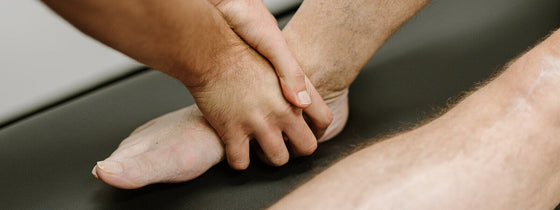What is proprioception?
Close your eyes and think about how your body is positioned right now. Perhaps you’re sitting at your desk or standing in a queue. How do you know you are sitting or standing? I bet you didn’t have to open your eyes and look down to see where you body is positioned!
This is called proprioception. Simply put, it’s our brain’s awareness of our limbs (arms and legs) in space. When we move, tiny signals in our limbs and joints send messages to our brain via our nerves about what position they are in. This plays a crucial role in our day-to-day life.
Why is it important?
Proprioception plays an important role in coordination. It allows us to complete day-to-day tasks, such as brushing our teeth, reaching for a glass or water, or driving a car. With impaired proprioception, these tasks can become challenging.
Proprioception also allows us to dictate how much force is required for activities. When we type on the computer, we need enough pressure to press on the keys and enable letters on the screen to appear, but not too much so that the keyboard breaks! This translates to sport too; we need adequate proprioception to gauge how much force we need to handball the footy to our opponent standing 2 metres away, compared to if they were 5 metres away.
Finally, proprioception plays a big role in our sense of balance. It works alongside our vestibular system to ensure we don’t fall over. When adapting to unlevel surfaces in the environment, our sense of proprioception provides us with information about where our hip, knee and ankle joints are in space, thus telling our brain what muscles we need to work to keep us standing upright.
What causes proprioception impairment?
There are several factors which can contribute to impaired proprioception. Naturally, our sense of proprioception decreases as we age, which is why people can develop balance issues with age and be prone to falls. Other factors include injuries such as ankle sprains and ACL tears, as well as recent surgery. With trauma, the messages being sent from our limbs to our brain aren’t working as effectively. This is why you might find standing on one leg challenging after you have sprained your ankle.
How do I put the PRO in proprioception?
So, how do you put the PRO in proprioception? The key is practice! The more you repeat specific movements and recognise where your limb is in space, the more efficient your limbs will become in talking to the brain and vice versa. For lower limb proprioception, balance exercises are a great way to start. Balance can be challenged in several ways, such as walking on an unstable surface, external distractions such as throwing a ball to the wall, or standing with your eyes closed. Always remember to consult your friendly Physiotherapists here at OHL if you’re concerned about your own or a loved one’s sense of balance and falls risk in the community.
If you’re interested to learn more about how you can improve your sense of proprioception, please reach out to our Physiotherapy team where we will assess and build a tailored treatment plan to help you reach your goals!

If you're experiencing back or neck pain with neurological signs and symptoms, a thorough neurological examination is crucial for accurate assessment and effective treatment. In this Optimal Tip learn more about what we mean by completing a neurological exam!

Squats, deadlifts, and calf raises are key movement patterns that should be part of every strength and conditioning program—regardless of age and activity level. These functional movements support joint health, improve posture and balance, and reduce the risk of injury while building strength where it matters most.

A ganglion cyst is a fluid-filled swelling that typically forms over a joint or tendon sheath, causing discomfort and pain, especially when pressing against nerves or joints. Proper assessment and treatment, including physiotherapy, are essential for managing symptoms and improving function in the presence of a ganglion in your hand, foot, or wrist.